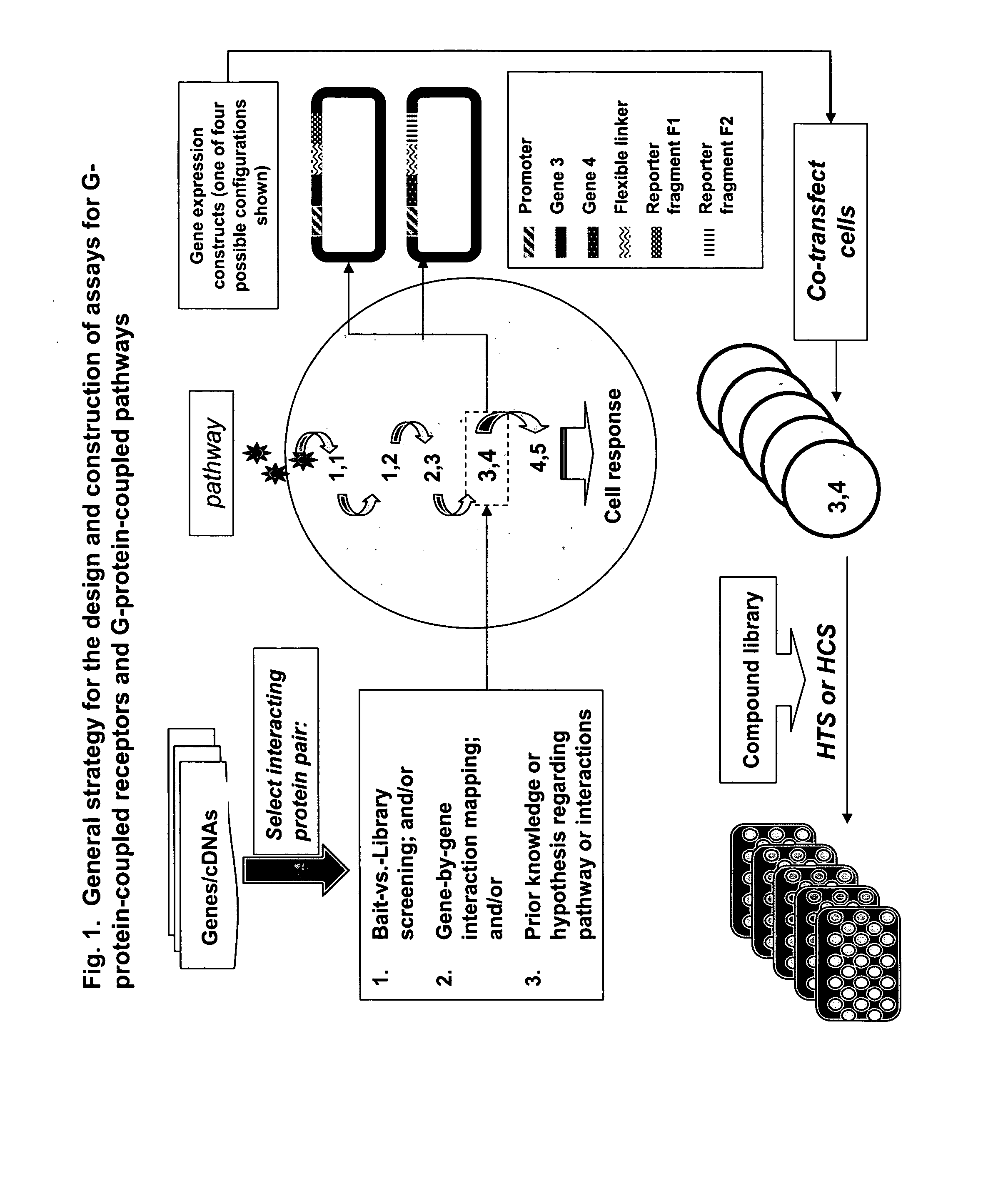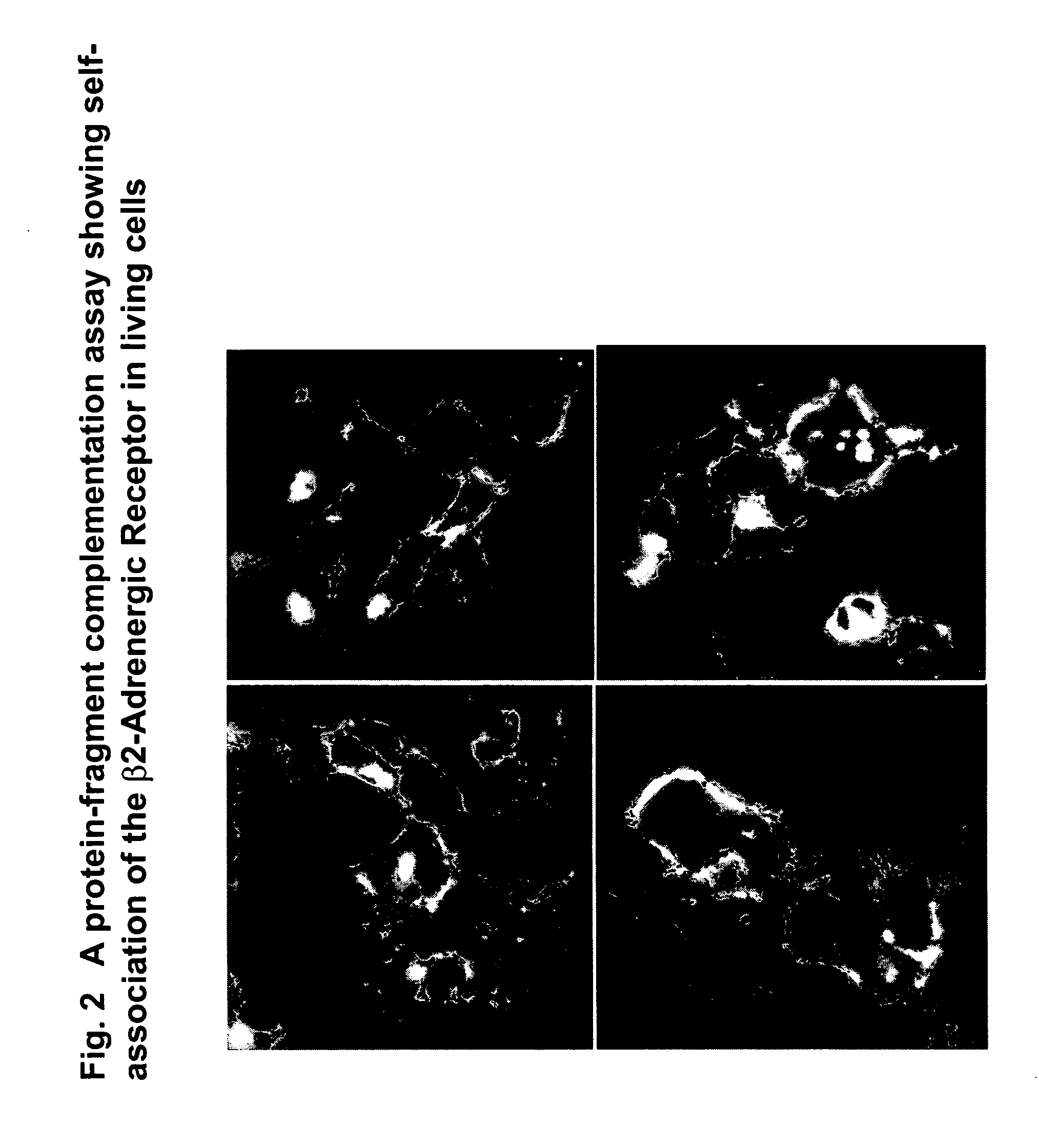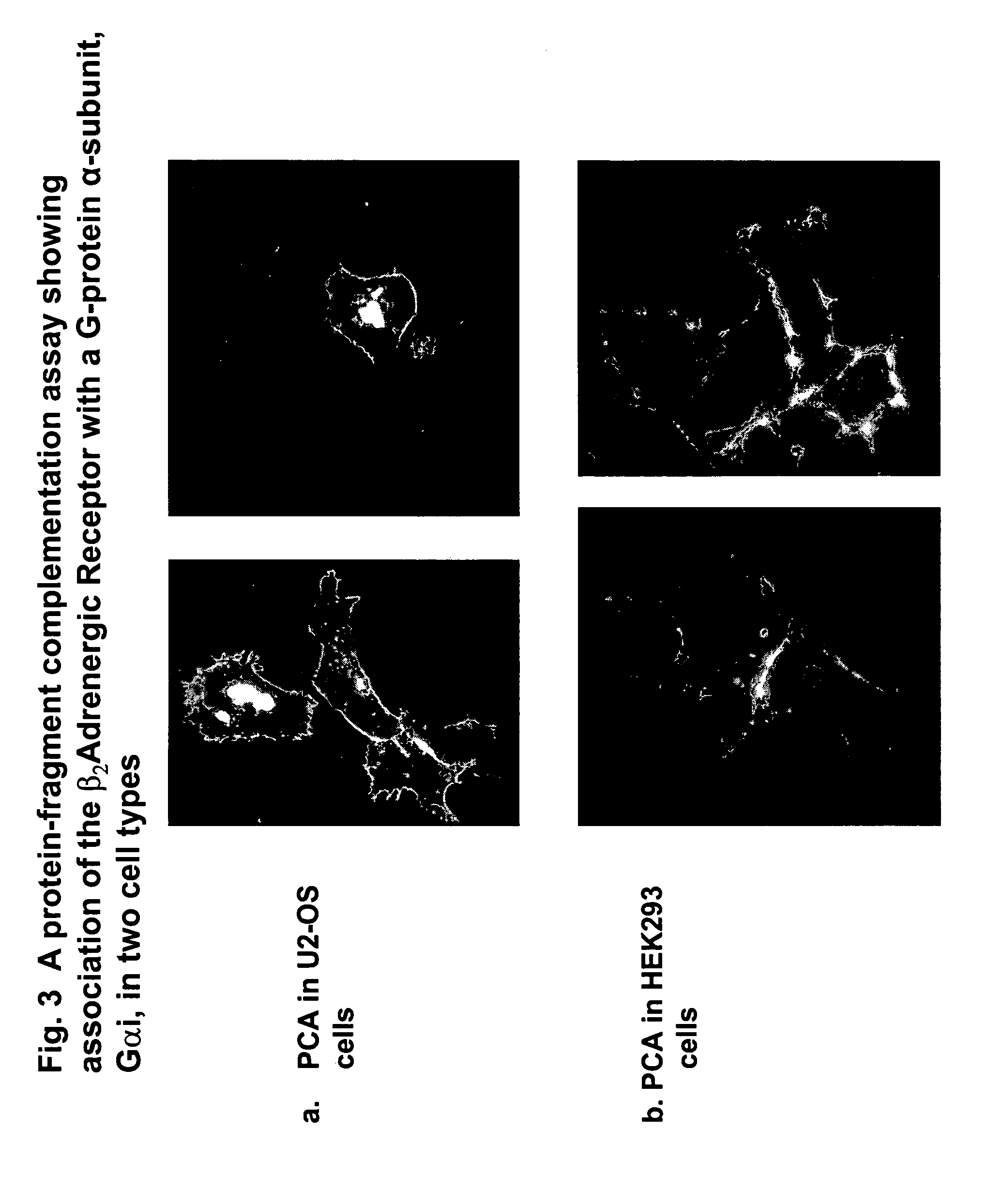Fragment complementation assays for G-protein-coupled receptors and their signaling pathways
a gprotein-coupled receptor and fragment complementation technology, applied in the field of molecular biology, chemistry and biochemistry, can solve the problems of difficult to express the protein of interest and/or obtain a sufficient quantity, take 6 months or longer to develop, and in vitro assay, so as to reduce the screening time, improve the sensitivity, and facilitate the construction of screening assays.
- Summary
- Abstract
- Description
- Claims
- Application Information
AI Technical Summary
Benefits of technology
Problems solved by technology
Method used
Image
Examples
example 1
Dimerization of GPCRs
[0071] A growing number of studies have shown that GPCRs are capable of forming homodimers or heterodimers (S. Angers et al., 2002, Dimerization: an emerging concept for GPCR ontogeny and function, Annu. Rev. Pharmacol. Toxicol. 42: 409-435; M K Dean et al., 2001, Dimerization of G-protein-coupled receptors, J. Med. Chem. 44: 4594-4614). Receptor self-association and subsequent changes in receptor activity have been reported for the beta2-adrenergic receptor (T. E. Hebert, 1996, A peptide derived from a beta2-adrenergic receptor transmembrane domain inhibits both receptor dimerization and activation, J. Biol. Chem. 271: 16384-16392), in addition to the delta-opioid receptors, the dopamine receptors, and other GPCRs. It has been shown that agonists can stabilize the dimeric forms of different GPCRs (U. Gether et al., 2000, Uncovering molecular mechanisms involved in activation of G-protein-coupled receptors, Endocrine Reviews 21:90-113), suggesting that homodime...
example 2
Associations of GPCRs with Subunits of Guanine Nucleotide Binding Proteins (G-Proteins)
[0074] GPCRs are coupled to their second messenger systems by heterotrimeric guanine nucleotide-binding proteins (G-proteins) comprised of subunits Galpha, Gbeta and Ggamma (C C Malbon & A J Morris, 1999, Physiological regulation of G protein-linked signaling, Physiol. Rev. 79: 1373-1430; T Gudermann et al., 1996, Diversity and selectivity of receptor-G-protein interaction, Annu. Rev. Pharmacol. Toxicol. 36: 429-459). When an extracellular ligand or agonist binds to a GPCR, the receptor exerts guanine nucleotide exchange factor activity, promoting the replacement of bound guanosine diphosphate (GDP) for guanosine triphosphate (GTP) on the Ggammasubunit. Upon binding GTP, conformational changes within the three flexible ‘switch’ regions of Galphaallow the release of Gbeta-gammaand the subsequent engagement of downstream effectors that are specific to each Galphasubtype. The intrinsic GTPase activi...
example 3
Intracellular Events Involving Beta-Arrestin
[0076] Beta-arrestins are adapter proteins that form complexes with most GPCRs and play a central role in receptor desensitization, sequestration and downregulation (for a review see Luttrell and Lefkowitz, J. Cell Science 115 (3): 455-465, 2002). Beta-arrestin binding to GPCRs both uncouples receptors from their cognate G-proteins and targets the receptors to clathrin-coated pits for endocytosis. Beta-arrestins may also function as GPCR signal transducers. They can form complexes with other signaling proteins, including Src framily tyrosine kinases and components of the ERK1 / 2 and JNK3 MAP kinase cascades. Beta-arrestin / Src complexes have been proposed to modulate receptor endocytosis and to act as as scaffolds for several kinase cascades. Beta-arrestin movement from the plasma membrane to intracellular vesicles has been visualized by tagging beta-arrestin with GFP and monitoring the subcellular distribution of the fluorescence in living...
PUM
| Property | Measurement | Unit |
|---|---|---|
| Fluorescence | aaaaa | aaaaa |
| Chemiluminescence | aaaaa | aaaaa |
| Phosphorescence quantum yield | aaaaa | aaaaa |
Abstract
Description
Claims
Application Information
 Login to View More
Login to View More - R&D
- Intellectual Property
- Life Sciences
- Materials
- Tech Scout
- Unparalleled Data Quality
- Higher Quality Content
- 60% Fewer Hallucinations
Browse by: Latest US Patents, China's latest patents, Technical Efficacy Thesaurus, Application Domain, Technology Topic, Popular Technical Reports.
© 2025 PatSnap. All rights reserved.Legal|Privacy policy|Modern Slavery Act Transparency Statement|Sitemap|About US| Contact US: help@patsnap.com



